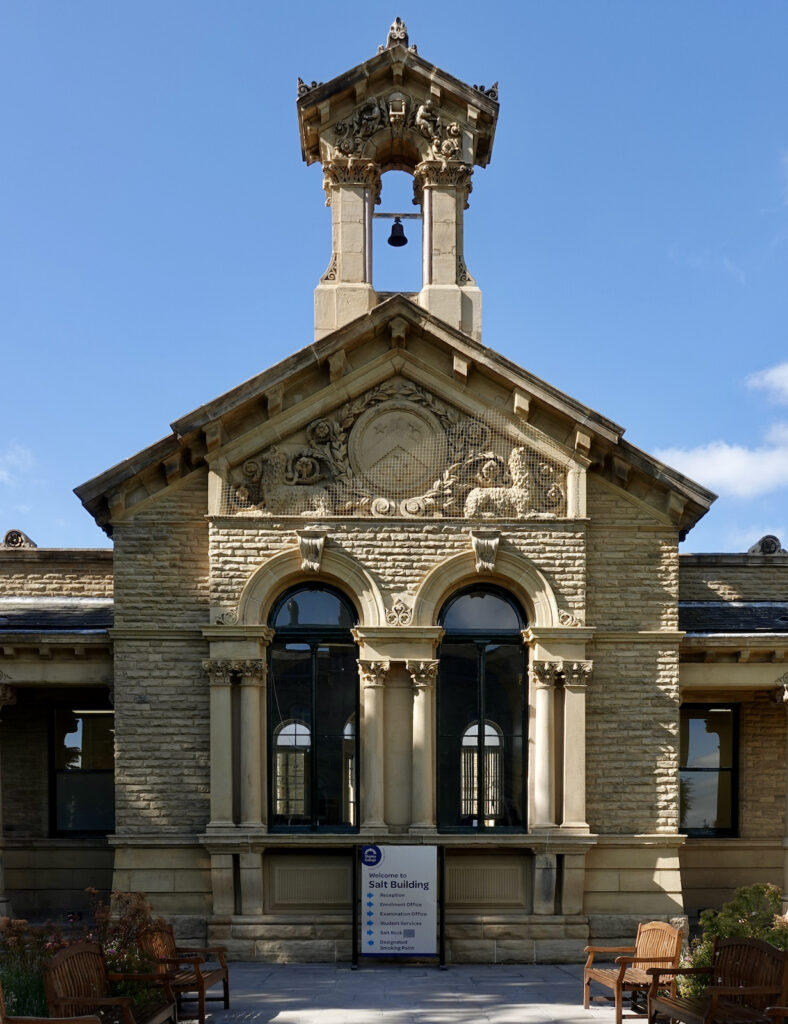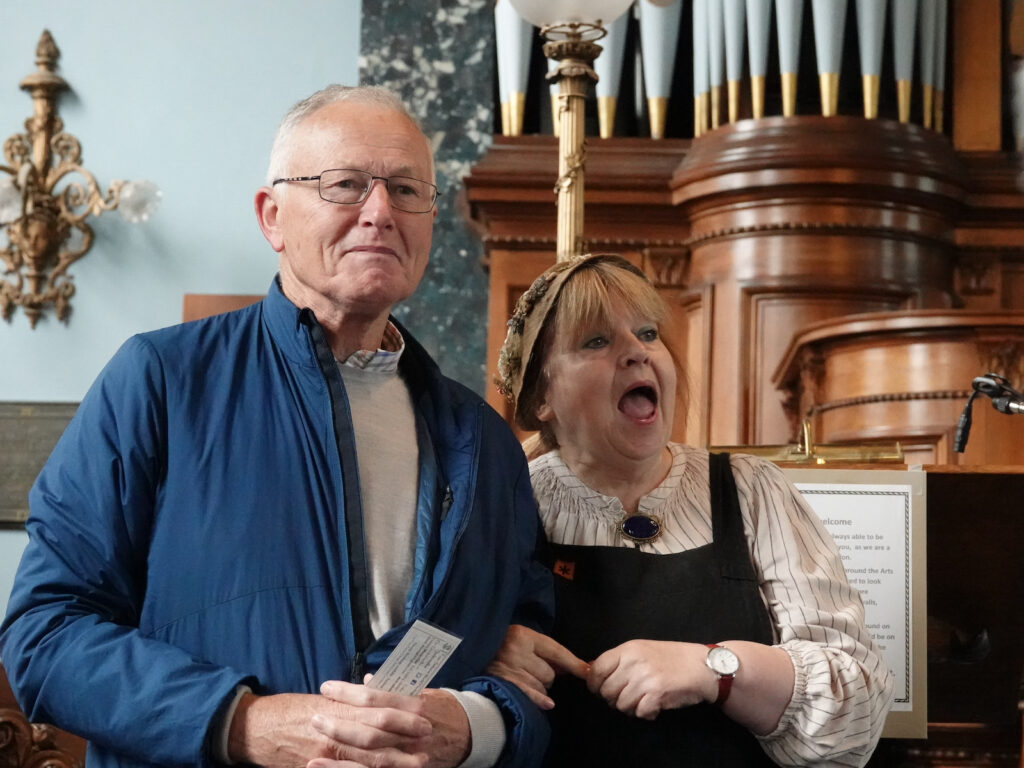Our Beewise Executive Travel coach, spot on time, took us on the scenic route through the Rivelin Valley, carefully avoiding the threat of Hagg Hill and on to Salts Mill. Graham Blincow organised the day beautifully, even including a pit stop on the way back.
Saltaire, a UNESCO World Heritage Site covering an area of 20 hectares, is a fascinating place. It was built between 1851 and 1871 by Sir Titus Salt, whose initials are dotted around on every edifice and iron railing, giving a clue to the sort of chap he was. Most think of him as a wonderful philanthropist, but Maria Glot, our tour guide leader, hinted that he centred himself more on ambition, influence and power.
Life expectancy in Bradford was around 21 years of age at the time, and improved dramatically in the new Saltaire textile mill in rural Shipley, by eliminating pollution. He was a very clever entrepreneur, spotting waste wool packs from Peru rotting on the Liverpool quayside. He bought them all cheaply and started importing; a massive amount of alpaca wool was woven in specially adapted textile looms. Everything was recycled, even soot in the baffled chimneys. Excrement was turned into fertiliser and urine used for tanning or alum production.
Children were put to work as early as seven years of age, snipping waste fabric under the looms, giving rise to the term “nippers”. There was a hospital, school (fees for both paid out of wages) and rows of neat stone houses for over 4,000 inhabitants. Quality housing, employment, recreation, education and social support was the first of its kind, and the prototype for later model villages. After Titus Salt’s death, family problems loomed, and the village was eventually sold. Houses are now privately owned.
We were met by Maria Glot inside the magnificent listed Congregational Chapel, and we were in for a lot of fun. Maria and her fellow guide were dressed in period costume and it was clear they were accomplished actresses. They reimagined Victoriana and roped in several Probus members for a bit of role play. Maria took the lead (aka Mrs Dooley). Her long-suffering husband Henry Dooley (aka the blogger – see picture), father of 11 “with another on the way”, was mercilessly ridiculed, in the nicest possible way.
Club chairman (Dick Birks, ex-anaesthetist) was miscast as the butcher (surgeon). Dr Welchew, Ted W’s wife and a really good sport, was also given the third degree by Maria. But it was all very entertaining. Maria and her friend (hospital matron) were word perfect, dynamic, absolutely in charge and set the scene beautifully for our walkabout through the village. Here, one was struck by the sheer quality of the stone buildings, many embellished with the TS motif, and the vast expense laid out by a very rich man, all in aid of making even more money for himself by “enforced labour”, despite all the apparent advantages of the surroundings and support.
Failure to comply with strict discipline, policed by watch towers at every street corner, meant exclusion from the village.
Lunch was very good. Members of the Wine Guild supplemented their sandwiches. We then were free to stroll to the River Aire and the Leeds-Liverpool canal, or wander through the vast galleries within the converted mill. Of note was the stunning 90-metre frieze of iPad drawings, depicting Normandy throughout the seasons, by David Hockney, and far bigger than the Bayeux Tapestry.
So thanks again to Graham Blincow for a great day.


